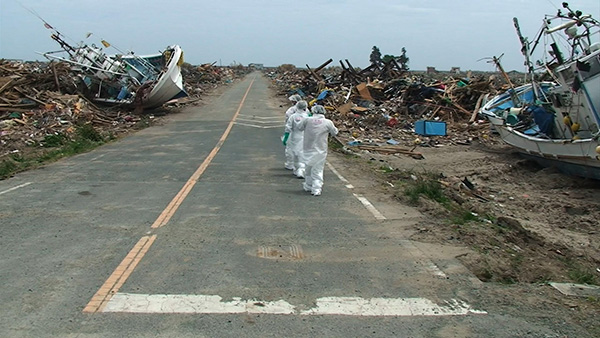
The Atomic Age was launched into existence with the twin strikes at Hiroshima and Nagasaki, which makes it ironic because today Japan is one of the leading users of nuclear power. The tiny island has the third largest number of reactors in the world.
Despite the trauma nuclear weapons wrought upon the nation, the last 40 years led to a frenzy of nuclear plant construction, bolstered by federal subsidies handed to tiny villa-ges. The 2011 Japanese tsunami caused a meltdown at the Fukushima plant, resulting in a nuclear accident that reached the top level of the International Nuclear Event Scale. The meltdown leaft panic and mass evacuations in its wake. The only other accident to reach this level of international attention was Chernobyl.
“Nuclear Nation,” a documentary by Atsushi Funahashi, focuses on the refugees forced to flee their homes in the town of Fut-aba following the 2011 meltdown. Abandoned by the Japanese government and torn up from the roots they planted, they were confined within the walls of an abandoned high school — most have been unable to return to their homes.
The refugees recreated the town within the walls of the building, living on packaged sushi, and sleeping in sleeping bags on the floor. By the time the audience meets them, they’ve set up a hospital, welfare center and even a mayor’s office at the school. Months have passed since the meltdown, but they are living in a stasis. Public officials visit the refugees and military marching bands perform, but nowhere is there a sense that help is arriving.
Even if they receive permits to go home, there’s nothing there. The tsun-ami leveled the town before the nuclear disaster, and rescuers could not search for missing family members before the evacuation was enforced. and the film shows this slow destruction of livelihoods. For instance, one local dairy farmer has the unenviable position of being forced to care for cows that will die of radiation instead of simply euthanizing them.
The town soon rallies into a force to fight against nuclear power but, during the mobilization, they forget how they previously needed the plant to survive. One of Funahashi’s gently expressed ironies is that Futaba needed the government subsidies from building more reactors to avoid bankruptcy.
“Nation” sometimes di-verges from this focus to examine the political factors swirling around nuclear power in Japan. Funahashi doesn’t editorialize, gloomy music notwithstanding. He just turns on his camera and records the strange tone of his environment, with cows roaming the roads and families living in school cafeterias.
The wake of catastrophe is full of wreckage and the temporary forging of new lives. But with the wide presence of nuclear plants in Japan, it’s not unlikely such a disaster will happen again — potentially on a worse scale. As a warning, “Nuclear Nation” is unusually contemplative and asks the audience what happens after you’ve been uprooted once already?
A version of this article appeared in the Tuesday, Dec. 10 print edition. J.R. Hammerer is a staff writer. Email him at [email protected].






















































































































































